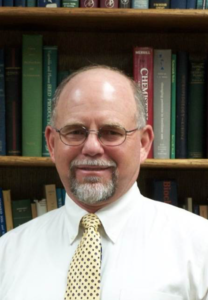AgriLife Research sorghum breeder Gary Peterson retires after 36 years
Writer: Blair Fannin, 979-845-2259, [email protected]
LUBBOCK – Dr. Gary Peterson’s career with Texas A&M AgriLife Research has come full circle as he puts the wraps on 36 years in sorghum breeding.
After graduating on a Saturday night from Oklahoma State University in 1982, Peterson went to work the following Wednesday at the Texas A&M AgriLife Research and Extension Center in Lubbock, specializing in breeding hybrids resistant to insects.

“I took over Jerry Johnson’s work with greenbugs,” Peterson recalled. “It had been a problem for pretty much all sorghum hybrids. We released germplasm for resistance for all biotypes of greenbug. Then in the early ‘90s with a couple of changes in biotype, the greenbug wasn’t as big a problem.”
However, insect pests continued to be a problem internationally and Peterson’s work, including work on mitigating midge damage in sorghum, continued for several decades, during which time he helped train students and solve breeding problems globally.
His work was heightened when it came to the sugarcane aphid.
“Our first exposure to sugarcane aphid was about 34 years ago and there was a graduate student who came to Texas A&M from Botswana,” he said. “He wanted to do research for the country of Botswana, and we sent him 432 lines from the Sorghum Conversion program along with standard checks.
“Over the course of his doctoral program, he evaluated all of those lines. One of the lines, Tx2783 was a line developed by my predecessor, Jerry Johnson, for resistance to greenbug, but never developed or evaluated for sugarcane aphid resistance. Seems that Tx2783 was also resistant to sugarcane aphid.”
When sugarcane aphid began to be a problem in the U.S. and Texas in 2013, Peterson said they knew the Tx2783 line was resistant in Africa.
“Lo and behold, we found it to be resistant here. It is likely been used in industry directly as a hybrid parent and in breeding programs to produce other sugarcane aphid resistant lines,” he said. “That’s a benefit of international work directly to producers here. We released 19 lines resistant to sugarcane aphid this year. Fifteen of those lines derive from Tx2783.”
Longtime colleague, Dr. Calvin Trostle, Texas A&M AgriLife Extension agronomist at Lubbock, said it was comforting to have Peterson’s expertise during the introductory phase of battling sugarcane aphids in Texas.
“Gary was the person who best explained to me the nature of the insect as he had been dealing with it in Africa for 30 plus years,” Trostle said. “It is not a major concern in Africa and it was reassuring to know that the insect could be managed in time.”
Peterson fondly recalled first coming to the Lubbock Center and getting acquainted with Roy Quinby, who had retired about 1960 as director of the AgriLife Research Chillicothe Station. Quinby later worked in private industry and retired again.
“Quinby and U.S. Department of Agriculture geneticist Joe Stephens found a sterility system in sorghum,” he said. “Many research papers prior to the late 1950s would be authored by Quinby and Stevens. The sterility system developed by those two led to the first commercial-scale production of grain sorghum hybrids. When I started, Mr. Quinby was still around and working part time at the Halfway Experiment Station. He was one of the pioneers. There’s a historical marker commemorating hybrid sorghum there at Chillicothe.”
That exposure to those pioneers helped shape Peterson as a go-to scientist for other colleagues at the Lubbock center in tackling sorghum production challenges for Texas farmers.
“Gary was often my sounding board as well as a reasoned voice on grain sorghum,” Trostle said.
“Among colleagues, Gary was a partner in my thinking about grain sorghum and what can be done to improve its management and value to farmers.”
Peterson has been recognized for his international research work, receiving the Texas A&M University System Vice Chancellor’s Award in Excellence for international involvement in 2009. The award recognized his 27 years of sustained leadership in sorghum improvement and educating international students.
“Because of his efforts, many students have been educated in U.S. universities and have returned to Africa to contribute to solving food problems,” the award nomination stated.
Peterson said he has enjoyed his career and was glad to meet scientists like Quinby along the way.
“I got the golden opportunity to observe them and things they were able to do to make really valuable contributions to Texas agriculture,” he said.
Peterson said he is looking forward to improving his golf game, domestic travel with his wife and spending time with his grandchild. However, he said, the desire to make scientific contributions to agriculture still prevail.
“What I’ve told people is if there’s something that I can participate in, particularly as it relates to the sugarcane aphid, don’t hesitate to give me a call,” he said. “If I can make a contribution, I will certainly do it.”


